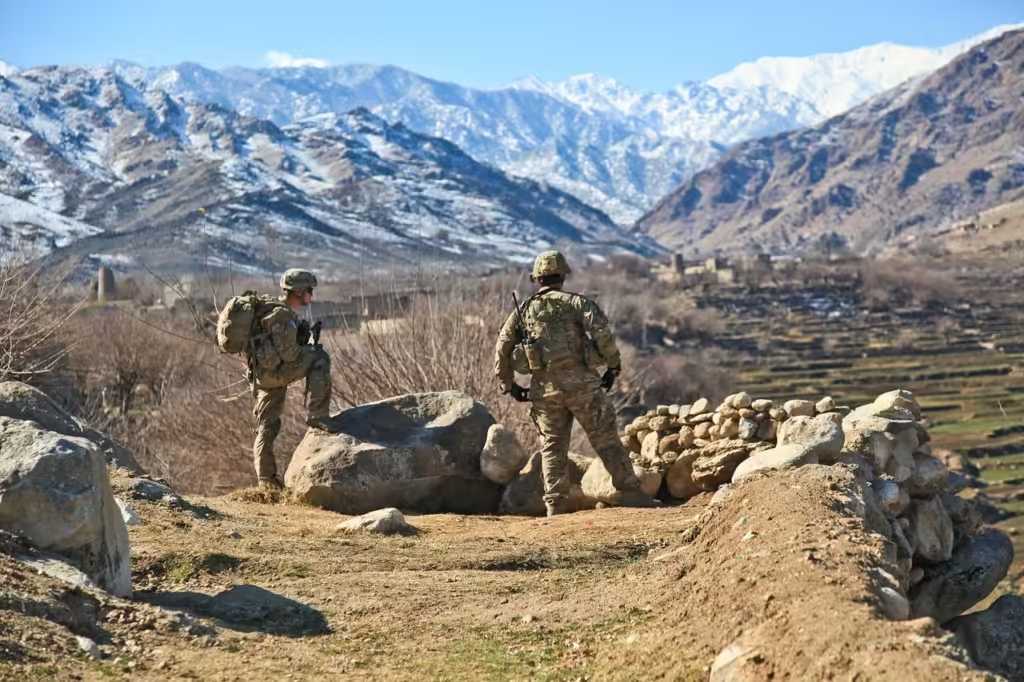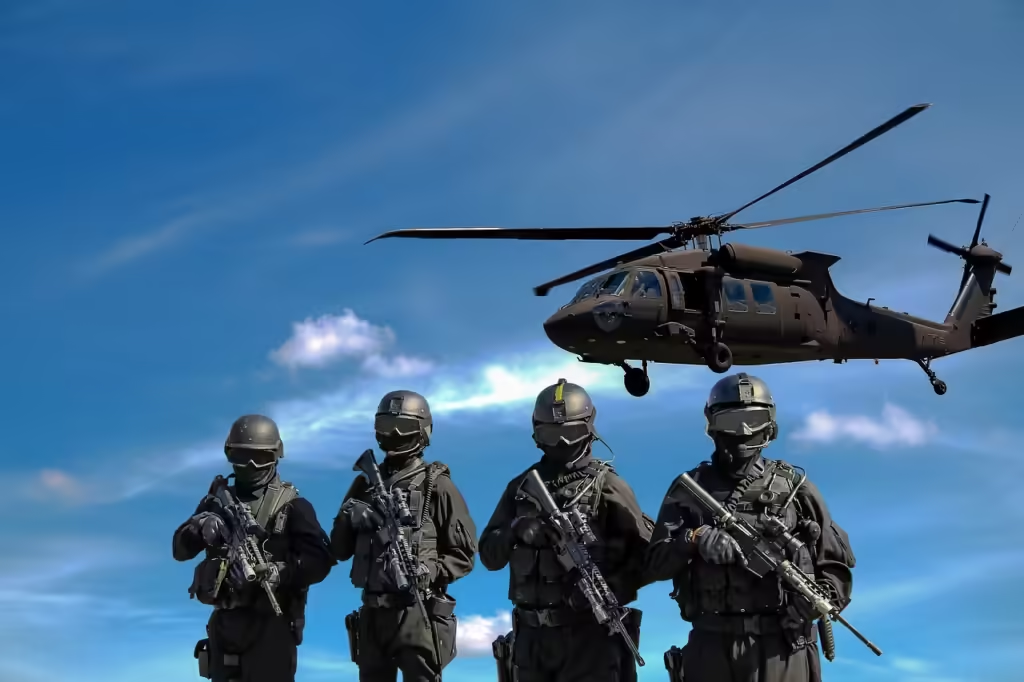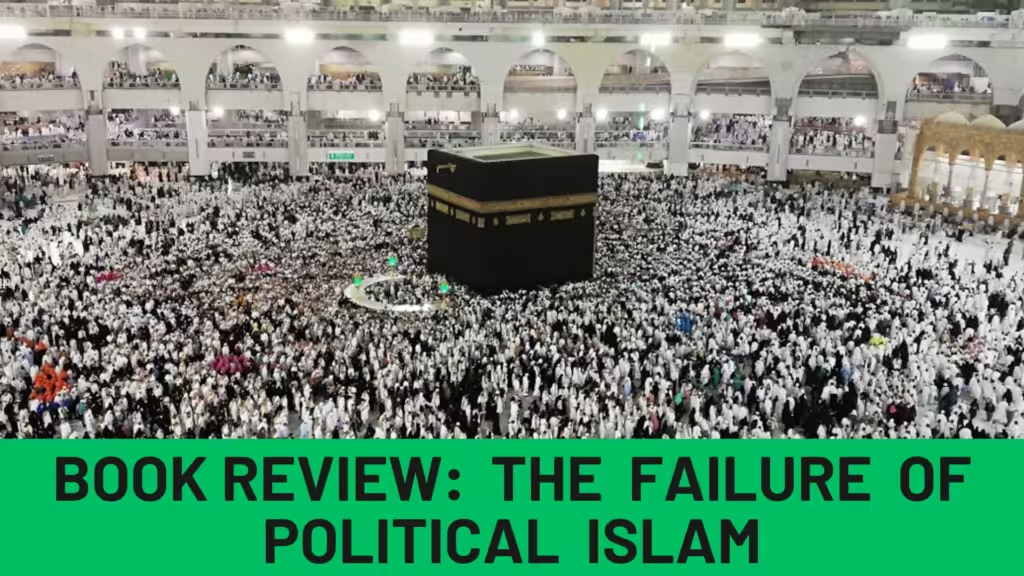New Wars and Old Wars: Human history, it is said, is primarily about war. Whether or not everyone agrees with this phrase, the crucial role played by it in shaping history and contemporary times is acceptable to all. But the nature of warfare is dynamic. It has changed according to social and technological evolution. While, in the contemporary age, the justification of war has become difficult, warfare has reinvented itself. The reinvention is due to a few primary reasons. First, the social acceptance of war has considerably reduced due to the spread of democracy, multiple international treaties and the mammoth casualties accompanying wars.

Second, the transformation of the economic structure of the world – from mercantilism to Keynesian liberalism, and now to neoliberalism, has made war and land less relevant factors in economic growth. And third, the negative aspects of technology have started to be asserted. This should be unsurprising, as technology has always been impacting the nature of warfare – from the invention of canons and rifles to aeroplanes and nukes. While a myriad of commentaries are available on the positive, mostly civilian, aspects of the promulgation of modern technology around the globe, not many commentaries are there that critique the grim aspects of its promulgation.
One such aspect is Military Technology. It has successfully transformed War not only as a militaristic but also as a social phenomenon. As a consequence of these factors, a new type of war has emerged in the past few decades– what is being called the New War. The theory was initially propounded by Mary Kaldor in her 1999 book New and Old Wars and has since found many advocates. The notion attempts to distinguish the two types of war by differentiating various aspects between them, highlighting the changes that have occurred over time. Technology and Globalization have plunged humankind into an era of perpetual growth. It is accompanied by a kind of warfare that no one has asked for. It is an inevitable repercussion of technology and globalization, but one that has certainly transformed our social behaviour.
Old War vs. New War
The major difference between the old wars and new wars is the erosion of the traditional nature of conducting them. The various traits of traditional wars have been entrenched in the human psyche with the developments in Fifteenth to Eighteenth-century Europe. The traits are being challenged, according to Kaldor, in the following way. First, traditionally, war has been the business of the state, a notion that was firmly established only towards the end of the eighteenth century.1
It was only established after the establishment of the supremacy of the state and its monopoly on legitimate violence. New wars are a consequence of the challenge posed by non-state actors, be it legitimate such as NGOs and the UN, or illegitimate such as insurgent groups, on the monopoly of the state. This, Kaldor says, is a consequence of opening up to the rest of the world 2. In such context, the distinction between state and non-state, public and private, external and internal, economic and political, and even war and peace is breaking down.3 The non-state actors, when it comes to convincing people by a mixture of coercion and consent, are replacing the state in the areas where new wars are starting to take place.

Second, old wars were fought between states by their regular armed forces. The massive armed forces were created to justify the supremacy of the state and to practically apply its monopoly on legitimate violence. New Wars, on the other hand, are fought by a varying combination of networks of state and non-state actors.4 This erosion also takes place in legitimate and illegitimate ways. For example, the private military companies, what David Singer calls modern mercenaries 5are contracted by the states incapable of dealing with particular circumstances. Whereas, the state regards the various insurgencies as unlawful and tends to use force to crush them.
New wars are mostly characterized by the presence of militias on at least one of the sides. These militias are undisciplined, rogue and carry out insurgency for non-national interests discussed ahead. The second trait is related to the third one of funding. Traditionally, the state used taxes to fund their political aspirations in the garb of war. The new wars, due to the low tax revenue of state sponsors, are financed by other methods such as drug trafficking, smuggling, loot, pillaging and so on. Although most of the new wars are localized, they involve a myriad of transnational connections.
The core principle of war as an extension of politics remains intact. Such asymmetrical warfare, as a result of the limited funding, engages in low-intensity conflicts, such as terrorism or hit-and-run operations. They are highly decentralized and form various sub-groups within themselves which is a consequence of the political nature of funding. For example, the Taliban, contrary to popular perception, isn’t a monolith. It has many factions within itself like the Haqqani network. In the case of internal funding, a few valuable commodities continue to be produced – e.g. diamonds in Angola and Sierra Leone, lapis lazuli and emeralds in Afghanistan, oil in Angola or Chechnya or Iraq, drugs in Colombia, Afghanistan and Tajikistan6. Much of the commodities produced are sold in black markets in foreign countries. Depending upon the nature of the group, taxes can also be imposed on its subjects.
Fourth, there is a distinction between the goals, in pursuit of which the new wars take place. Old wars were fought for geopolitical interests or in the name of ideologies. The interests of the state justified wars to capture strategic places that might benefit the state enormously or pose a national security threat. However, new wars are fought on identities (ethnic, religious, tribal etc.). These are quite different from the demand for political rights based on identity, that is to say, the right to power based on identity as opposed to the demand for power based on a political programme.7
In such cases, people of an ethnic or religious group have a claim to power based on their identity. This exclusive claim to power, Kaldor says, is fragmentation and regressive, and based on the reconstruction of a heroic past, the memory of injustices, real or imagined, and of famous battles, won or lost 8. For example, the Balkans War in the early 1990s was an exclusive claim to the power of an ethnic group, that pressed ethnic nationalism, instead of being an inclusive state. The old goals were more inclusive, according to Kaldor, as compared to the new ones and in larger interests of the people, whose aim is to access a state for a particular group with a particular identity 9.

She attributes the rise of such identity politics to new communication technologies in particular and to Globalization in general. Moreover, the objective of old wars was Nation building. The wars waged were in the national interest. New wars are associated with the dismantling of the state. The insurgencies that are prime examples of the new wars are typically associated with the dismantling. State institutions are one of the prime targets in asymmetric warfare.
Fifth, the wars differ in the means of exercising political goals. In old wars, battles were decisive encounters, The method of waging war consisted of capturing territory through military means. It was a display of military strength and consent of the public was optional. The territory was captured either for national interests or personal and political interests. The basic justification for the war was national security and an increase in tax revenue and spoils of war.
On the other hand, in the new wars, battles are rare and territory is captured through political means, through control of the population.10 Such control is exercised through means of Globalization. The goal is to revive the historic links between the groups when there is a similarity between them. The population is controlled mainly through consent, propaganda or cultural hegemony. Then there is also the phenomenon of population displacement in which a forcible transfer of a group of people is done.
Such displacement also instigates nationalistic fervour that might culminate in the process of ethnic cleansing. Such power is exercised through the use of force. The reason for such a trait lies in new wars. Old wars tend to be extremes as each side tries to win a piece of land. New wars try to spread as an idea and persist or recur as gains are mostly political or economic. There are no clear winners or losers in new wars. It is just a political purpose that is either fulfilled or not.
Sixth, the prime targets in new wars are the civilians and not the army men. Since battles are becoming rare and direct engagement is diminishing, the natural and easy targets in asymmetric warfare are civilians. The purpose of targeting civilians is multi-pronged. It executes the political purpose of a certain group. It also raises nationalistic feelings in some and gives a political message to the state.
All the differences between the two wars, Kaldor points out, are attributed to the globalized world. Since the gap between the two places is now being bridged by modern technologies, it is easy to influence a particular group. Additionally, the foundation principles of organizations like the UN are a challenge for a state to maintain a balance between sovereignty and international cooperation. Also, since Globalization is accompanied with surge in nationalistic sentiments, it has made it easy for new wars to spread. The spread of terrorism in the world is also attributed to Globalization. It is a misuse of Globalization that is used to prevent itself from spreading. For example, the attack on the World Trade Center on 9/11 was a symbolic attack on the idol of Globalization.
Is the division relevant in the current context?
Henderson and Singer point out “Many of the “new wars” are simply amalgamations of various interstate, extrastate, and intrastate wars—i.e., the “old wars”—that have been lumped into a single category. The result is a hodgepodge of armed conflicts whose different correlates derive from their diverse morphologies rather than their novelty as wars unlike any we have experienced previously.”11
The fact that these two renowned authors call New Wars a ‘hodgepodge’ is a remarkable criticism. When one goes through Mary Kaldor’s book, one finds that the incoherent characteristics of both Old and New wars are overwhelming. No factor binds all features of the old war together. And same is true for new wars. Many of the Twenty-First century wars consist of features of old wars, and vice versa, and some contain features of both old and new wars. For instance, the war in Donbas, Ukraine has a few features of a new war but also lacks a few of them.
The pro-Russian forces might be covertly supported by Russia but there has also been direct combat and deployment of many Russian paramilitaries 12. The war has also gone to ‘extremes’ i.e. physical capture of land– the Crimean Peninsula– has taken place that goes against the notion of new wars. There is a high degree of lack of precision in the theory. Moreover, the author heavily relies on asymmetric warfare to develop the traits of New wars. But the nature of asymmetric warfare has been the same since its inception in pre-historic warfare.13 Many Indian rulers used guerrilla tactics in medieval India.
Kaldor also relies heavily on the Balkan wars of the early 1990s to explain her theory. The assertion of ethnicities being the primary driver of armed conflict seems to come from the Balkans. This is however refuted by the War in Afghanistan. In Afghanistan, many of the characteristics of the new war apply but a few. Afghanistan is not a battleground for ethnicity-based conflict. In fact, on the contrary, the Taliban and the leadership of the Afghan government belong to the same ethnic group – the Pashtuns. It is a war of political ideologies in Afghanistan. The assertion of nationalism was a common feature during the 1990s when communism succumbed to capitalism. As a consequence, ethnic and religious nationalism was ubiquitous in former communist regions.

The authors of the New Wars theory also do not explain the timeline of the Old and New Wars. There is no explanation of when the era of old wars ended and new wars began, or when the transformation in character of war began. The characteristics of the new war of assertion of ethnicity in politics can be dated to medieval times, culminating in the mid-to-late nineteenth century in the Unification of Germany and Italy. Moreover, the trait of controlling the population as a method to wage war is extremely common in modern Europe. For example, it was the tactic used by Hitler in the 1930s to occupy parts of Czechoslovakia’s Sudetenland, parts of Austria and the Rhineland.
The war unleashed after that can hardly be classified as a New War. There is a profound lack of clarity on the overlapping characteristics of old and new wars. The author also claims that old wars have not ceased to exist. Though there is no denial of the fact that conventional wars have more or less ceased to happen in recent years, they cannot be termed as old. Technology has always played a crucial role in determining the type of warfare. Additionally, many of the traits of the new war, whose proponents classify it as a postmodern phenomenon14, can be found in the Cold War period, such as trans-national support to warring factions.
Such inconsistencies, incoherence, and precision-less features make it difficult to classify a war in any one of the categories. The authors heavily rely on the decade of the 1990s to propound the theory. However, wars that took place just at the beginning of the century exposed the lack of clarity in the notion. Both the War in Afghanistan and Iraq defy the theory in some ways. The factors that are discussed above make it difficult to use this underdeveloped notion.
Conclusion
Mary Kaldor and other proponents of this theory have initiated a meaningful debate on changing the character of war. It has contributed to studies that try to push the boundaries of security studies beyond the traditional focus on national security to incorporate other threats like non-state actors, poverty, resource wars, migration, human rights abuse, refugee problems, identity, markets, Non-governmental organizations (NGO’s) and the environment, to mention a few. Though the theory is not fully developed, it hints at a major development in warfare.
Although war has not changed fundamentally, the way it is being waged is continuously changing in an era of perpetual growth. Kaldor says that ‘the main purpose of distinction between the two types of war is to change the prevailing perceptions of war, especially among the policymakers’. This can be achieved even if there is a lack of clarity on many things. Though there is no radical differentiation between the two types of war, the thesis has opened up a lot of scholarly debate, if nothing else, into the phenomenon of post-cold war conflicts.15
References
1 Kaldor, New and Old Wars
2 Ibid.
3 Kaldor, In Defense of New Wars
4 Ibid
5 Singer, Modern Mercenaries
6 Kaldor, New and Old Wars
7Ibid
8Ibid
9 Kaldor, In Defense of New Wars
10 Ibid
11 Henderson and Singer, New Wars and Rumors of New Wars
12 “Pushing locals aside, Russians take top rebel posts in east Ukraine” https://www.reuters.com/article/2014/07/27/us-ukraine crisis-rebels-insight-idUSKBN0FW07020140727
13 Keeley, War Before Civilization
14 Kaldor, New and Old Wars
15 Williams, Relevance of Mary Kaldor’s new war thesis in the 21st century
References
• Mary Kaldor, New and Old Wars (1999)
• Mary Kaldor, In Defense of New Wars (2013)
• Henderson and Singer, New Wars and Rumors of New Wars
• Mats Berdal, How “New” Are “New Wars”? Global Economic Change and the Study of Civil War • Sven Chojnacki, Maurice Herchenbach and Gregor Reisch, Perspectives on War: Disentangling Distinct Phenomena: Wars and Military Interventions, 1990-2008
• Stathis N. Kalyvas, “New” and “Old” Civil Wars: A Valid Distinction?
• DU Williams, Relevance of Mary Kaldor’s new war thesis in the 21st century




